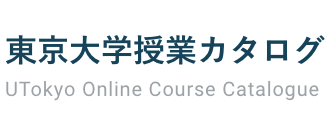過去(2022年度)の授業の情報です
学内のオンライン授業の情報漏洩防止のため,URLやアカウント、教室の記載は削除しております。
最終更新日:2025年10月17日
授業計画や教室は変更となる可能性があるため、必ずUTASで最新の情報を確認して下さい。
UTASにアクセスできない方は、担当教員または部局教務へお問い合わせ下さい。
最終更新日:2025年10月17日
授業計画や教室は変更となる可能性があるため、必ずUTASで最新の情報を確認して下さい。
UTASにアクセスできない方は、担当教員または部局教務へお問い合わせ下さい。
世界歴史と東アジアI(7)
The Emperor’s Red Trousers: Clothing and Color in Japan
Since sometime in the late Heian period (c. 9-12C), the emperors of Japan came to wear as their daily outfit a loose robe with a pair of long red trousers, which was similar to what court ladies used (for some images, see https://commons.wikimedia.org/*****ōshi). This style was used till the beginning of the modern period (late 19C), while today it is used as a special ceremonial robe once in a reign. One might speculate that this distinctive costume visualized the sovereign’s unique status or that the emperor had a feminine (or cross-gender) characteristic. However, it is in fact challenging to trace the origin and development of this custom and to uncover the complex and subtle meanings of color and clothing.
Revolving around the history of the emperor’s red trousers, this course incorporates the methodologies of comparative and interdisciplinary studies to explore the culture of color and clothing in Japan. It will cover topics such as the following: How did the emperor’s outfit change over time and what do such developments connote? What can we see from comparing cultures over different regions and/or different eras? For example, how were trousers used in Japan, East Asia, or other regions in the world? What did the color red mean in different historical contexts?
The objectives of the course are: 1) to deepen knowledge of history and culture, 2) to develop analytical skills through reading scholarly arguments and sources, and 3) to become able to give clear and accurate presentations and write coherent essays.
Revolving around the history of the emperor’s red trousers, this course incorporates the methodologies of comparative and interdisciplinary studies to explore the culture of color and clothing in Japan. It will cover topics such as the following: How did the emperor’s outfit change over time and what do such developments connote? What can we see from comparing cultures over different regions and/or different eras? For example, how were trousers used in Japan, East Asia, or other regions in the world? What did the color red mean in different historical contexts?
The objectives of the course are: 1) to deepen knowledge of history and culture, 2) to develop analytical skills through reading scholarly arguments and sources, and 3) to become able to give clear and accurate presentations and write coherent essays.
時間割/共通科目コード
コース名
教員
学期
時限
08F150807
FAS-FA4F08L3
世界歴史と東アジアI(7)
中井 真木
火曜2限
講義使用言語
英語
単位
2
実務経験のある教員による授業科目
NO
他学部履修
可
開講所属
教養学部
授業計画
The following schedule and the readings are subject to change, depending on the size of the class, the interest of the participants, and the form of the classes (face-to-face or Hyflex etc.)
1. [Apr. 19] Introduction: the emperor’s red trousers (Zoom)
2. [Apr. 26] Modernizing the emperor’s outfit (Zoom)
> Hirayama, Mikiko. “The Emperor’s New Clothes: Japanese Visuality and Imperial Portrait Photography.” History of Photography, vol. 33, no. 2 (2009): 165-184.
3. [May 3] Imperialism and clothing (Zoom)
> Ross, Robert. “The Rules of Dress” & “Redressing the Old World,” In Clothing: A Global History: Or, the Imperialists’ New Clothes, 12-37. Polity, 2008.
4. [May 10] Gender and trousers (hereafter Hyflex)
> Ford, Richard Thompson. "Recoding Gender," In Dress Codes: How the Laws of Fashion Made History, 261-272. Simon and Schuster, 2022.
> Brainstorming & grouping for comparative study of trousers
5. [May 17] Trousers in ancient Japan
> Takeda, Sachiko. “Trousers, Status, and Gender in Ancient Dress Codes.” In Women and Class in Japanese History, edited by Hitomi Tonomura, et.al., 53-65. Center for Japanese Studies the University of Michigan, 1999.
> Group work for comparative study of trousers
6. [May 24] Comparative study of trousers
> Students' presentations on comparative study of trousers
7. [May 31] Red in Europe
> Pastoureau, Michel. Red: The History of a Color, tr. by Jody Gladding. Princeton University Press, 2017 (excerpts).
8. [Jun. 7] Red in East Asia
>Lai, Guolong. “Colors and Color Symbolism in Early Chinese Ritual Art: Red and Black and the Formation of the Five Colors System.” In Color in Ancient and Medieval East Asia, edited by Mary Dusenbury. Spencer Museum of Art, the University of Kansas, 2015.
> Brainstorming & grouping for comparative study of red
9. [Jun. 14] Color at the Japanese court
> Dusenbury, Mary M. “Color at the Court of Japan in the Heian Period.” In Color in Ancient and Medieval East Asia.
> Group work for comparative study of red
10. [Jun. 21] Comparative study of red
> Students' presentations on comparative study of red
11. [Jun. 28] The system of Japanese court robes
> Hurst, G. Cameron. “The Heian Period.” In A Companion to Japanese History, 30–46. Blackwell Publishing, 2007.
12. [Jul. 5] Women and red trousers in medieval Japan
> Pandey, Rajyashree. “Performing the Body in Medieval Japanese Narratives: Izumi Shikibu in Shasekishū.” Japan Forum 19, no. 1 (2007): 111–30 (excerpts).
> Submission of an annotated bibliography for the term paper
13. [Jul. 12] The emperor’s red trousers
> Visual materials to be “read” will be provided.
> Submission of an outline for the term paper
Jul. 19: the term paper due
授業の方法
The classes consist of reading, lectures, group work, discussions, and students’ presentations. Students will be required to write a term paper and make two individual or group presentations. Through these activities, this course aims to provide students with an opportunity to read texts and observe the world critically.
Classes are conducted in English.
成績評価方法
The evaluation will be based on students’ commitment in regular classes, their presentations, and their term paper.
1) Class participation: 20%
2) Homework assignments: 20%
3) 2 presentations: 30% (15% each)
4) Term paper: 30%
教科書
Readings should be obtained from databases such as JSTOR or will otherwise be provided as pdfs via ITC-LMS and Perusall.
参考書
None
履修上の注意
Prior study of Japanese history or culture is not required but is highly recommended. Competence in reading and discussing academic literature in English is essential.
その他
As a way to supplement the reduced class hours, there will be an optional field trip to a museum, if the situation allows.





 学部後期課程
学部後期課程

 マイリストに追加
マイリストに追加
 マイリストから削除
マイリストから削除


